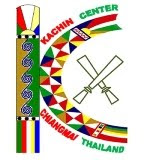By WAI MOE Wednesday, June 29, 2011

Burmese soldiers take part in a military parade marking the country's Armed Forces Day at a parade ground in the new capital Naypyidaw in 2008. (Photo: AP)
Commanders of the Tatmadaw (Burma’s armed forces) held their latest four-monthly meeting last week where “limited operations” in ethnic areas were discussed as well as intelligence reform.
Recent military operations in Kachin, Shan and Karen states were examined following unexpected government casualties amounting to 30 dead including 10 officers—one Lieutenant-Colonel and two Majors amongst others—in Kachin State alone this month, according to intelligence sources.
President ex-Gen Thein Sein’s new military-backed government came to office on March 30, but regional stability has suffered with armed conflicts spreading from Karen ethnic areas to ceasefire regions in Shan and Kachin states near the Sino-Burmese border.
Citing weekly military reports from regional military commands to the War Office in Naypyidaw, sources said that skirmishes and casualties were reported in Karen National Union (KNU) areas from Tenasserim Region to Karen State after March 30.
“There have been red remarks (government troop casualties) in reports on skirmishes in KNU areas every week during the past three months,” said a military source that spoke on condition of anonymity.
He added that, unlike last year, government troops are currently taking part in two other armed conflicts—in Kachin and Shan states—and said that most of the recent casualties were through ambushes and snipers.
On June 9, fierce fighting broke out in Kachin State, near the Sino-Burmese border in northern Burma, after nearly 17 years of ceasefire between the regime and the Kachin Independence Organization (KIO).
Earlier, government troops skirmished in Shan State with the Shan State Army (North) ceasefire group. Fighting with the SSA-North took place in both northern and southern Shan State with the cooperation of the non-ceasefire Shan State Army (South).
Tension between Naypyidaw and ethnic ceasefire groups began in April 2009 when the military junta, the State Peace Development Council (SPDC), forced ceasefire armed groups to transform into Border Guard Forces (BGF) under the commander-in-chief of the Tatmadaw.
Many ethnic armed groups—including the influential United Wa State Army (UWSA) and KIO—rejected the BGF saying it involved disarming without any political guarantees.
From April 2009 to August 2010, Lt-Gen Ye Myint, then chief of the Military Affairs Security (MAS) and now Mandalay Region’s chief minister, served as the main negotiator between Naypyidaw and ethnic ceasefire groups over the BGF.
However, Naypyidaw has not held any main negotiator with ethnic armed groups since Ye Myint was replaced in the chief MAS post by Maj-Gen Kyaw Swe, formerly the commander of Southwest Regional Military Command, in August 2010.
“During ongoing armed conflicts with Kachin Independence Army (KIA) troops, former minister of Telecommunications, Post and Telegraphs U Thein Zaw came for negotiations as a member of Parliament—but no one from the military commanders [turned up],” said an intelligence officer with the KIA from Laiza who spoke on condition of anonymity.
“It means negotiations came from former generals or the Parliament, rather than from the military. It is quite odd as there is no guarantee from military commanders,” he added.
Another highlighted issue at the commanders’ four-monthly meeting last week was reportedly reform of intelligence, particularly collaboration between the government secret services under a main body. The regime has attempted since early this year to replace the National Intelligence Bureau (NIB) which was abolished in late 2004.
A Burmese intelligence report suggests that a new collaboration called the “National Defense and Security Force” will oversee military intelligence bodies such as the Military Affairs Security and other secret agencies including Special Branch (SB) and the Bureau of Special Investigation (BSI) under the Ministry of Home Affairs, even though there has been no official confirmation.
Brig-Gen Soe Shane—General Staff Officer at the War Office and a senior figure regularly beside former junta chief Snr-Gen Than Shwe during trips at home and aboard—is tipped to head the new national intelligence collaboration, according to sources. In the past Soe Shane studied counter intelligence with the Military Intelligence Service, which was abolished in 2004.
Aung Lynn Htut, a former counter intelligence officer and ex-Burmese deputy chief of mission to Washington, said he also heard reports about Naypyidaw’s reform for intelligence collaboration under the military-backed new administration.
“Intelligence collaboration like the NIB will be more powerful under the new administration while MAS is under the commander-in-chief,” he said.
“If Brig-Gen Soe Shane becomes the national intelligence collaboration’s director, Snr-Gen Than Shwe and his family will be safer as Gen Min Aung Hlaing is commander-in-chief of the defense services and Brig-Gen Soe Shane is intelligence chief.”
Meanwhile, former deputy chief of Military Intelligence Maj-Gen Kyaw Win visited Thailand’s northern capital of Chiang Mai—where many Burmese dissidents are based—in early June, the same time as government troops were battling the KIA in northern Burma.
Although the purpose of Kyaw Win’s trip is undisclosed, a Thai intelligence source said he went back to Burma by Air Bagan on June 12. Kyaw Win was one of the key players for securing ceasefire agreement with ethnic armed groups. He is also one of two Military Intelligence senior officers who were not imprisoned during the Burmese Army’s crackdown on former colleagues in October 2004.
Source : http://www.irrawaddymedia.com/article.php?art_id=21593&page=2






No comments:
Post a Comment